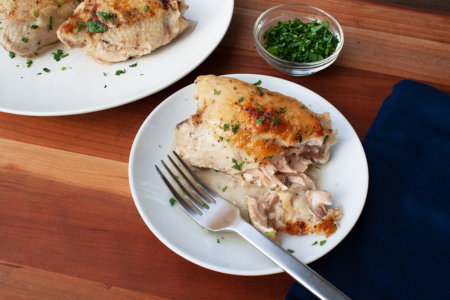Turnips are a versatile ingredient that can be served raw or cooked. With a long storage time and over 30 different varieties, turnips make a great addition to any kitchen. Read on to learn more about these tasty root vegetables.
History of Turnips
Turnips are said to have first been cultivated in Northern Europe and were sourced as an important food product in the Hellenistic and Roman times. Brassica Rapa, the plant species that includes turnips, bok choy, and napa cabbage to name a few, was first domesticated and cultivated from Mediterranean to India around 2000 BC. This ingredient was also found around Western Asia and Europe around the same time. Turnips gradually made their way to China and Japan around 700 AD. Today, turnips are most commonly cultivated in temperate climate conditions worldwide for their white, fleshy taproots.
Flavor of Turnips
Freshly cultivated turnips, when eaten raw, have a bitter and spicy taste. But when turnips are properly cooked, they develop a sweet, nutty, and earthy taste. Turnips have very different tastes and textures depending on whether they are raw or cooked. The method in which they are cooked also impacts their finished flavor.

Health Benefits of Turnips
Research has shown that turnips help in lowering blood pressure because the potassium in turnips helps to release sodium from the body which impacts blood pressure.
A 2015 study has said that a high intake of cruciferous vegetables reduces the risk of cancer. Specifically, sulforaphane, a compound found in turnips, interferes with the function of histone deacetylase, an enzyme that multiplies cancer cells. More generally, turnips are also a good source of protein, fiber, Vitamin K and C, phosphorus, sodium, folate and zinc.
Culinary Benefits of Turnips
Turnips are a great addition to salads and can even serve as the main ingredient in your salad recipe. You can top off your next salad with julienned turnip or add turnips as a fresh, crunchy side to your next grain bowl. Try grated fresh turnip mixed into fried rice for an extra boost of nutrition.
An Indian take on turnips would be a nice bowl of Turnip Dal. A healthy option to go with a bowl of rice or other veggies. It is also a recipe that is quick to make with a little number of ingredients.
Turnips can also be added to your next potato recipe. Turnips give a good twist on standard mashed potatoes. Try a mix of 75% potatoes and 25% turnips in your next mashed potato recipe. And if you are looking for a nice dinner recipe that highlights the true taste of turnips, then we’ve got you covered. Try out our Turnip Gratin recipe.

Types of Turnips
There are over 30 various types of turnips, but the most common turnip is the purple-top turnip. The 30 varieties of turnips offer different types of flavors, colors, and sizes all with a unique use. Baby turnips are a unique variety and they can come in white, gold, or purple-colored tops, while scarlet turnips are bright red in color and look like big red radishes.
The inner portion of a turnip can be as varied as the exterior. For instance, the flesh of turnips can be golden, yellow, or red-veined and the bitter ones can be creamy.

Storage
The best method for storing fresh turnips is to remove the leaves and wash the exterior of the turnip thoroughly to remove any dirt. Transfer your turnips to the refrigerator to extend its shelf life.
Once refrigerated, turnips can be used for up to 5 days. Untrimmed, whole turnips can easily be stored in a plastic bag before they are refrigerated to maintain their freshness.
Feature Image: Hans Braxmeier from Pixabay



